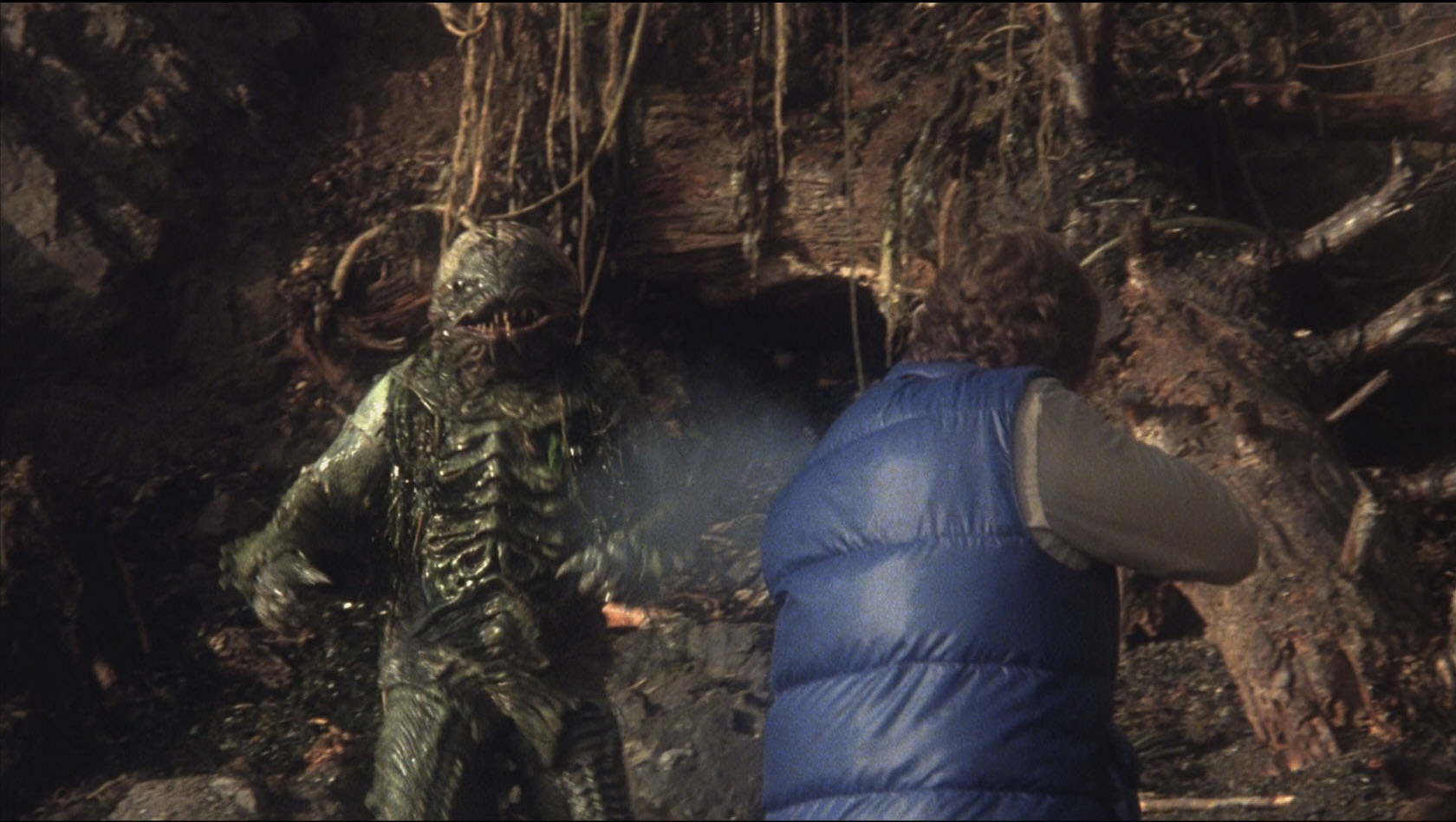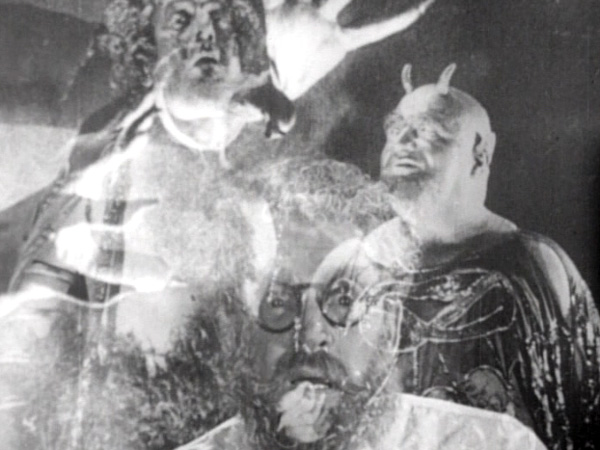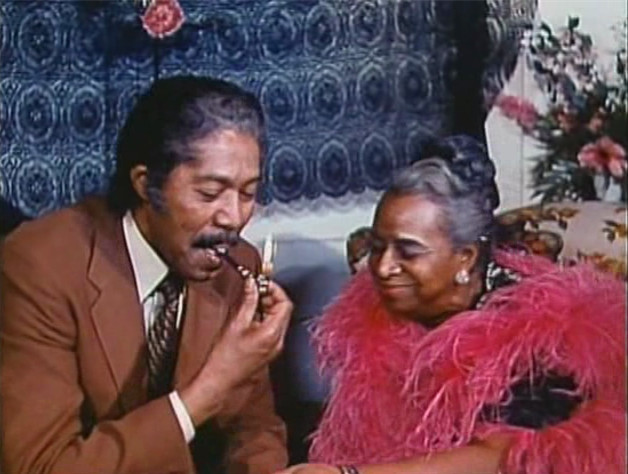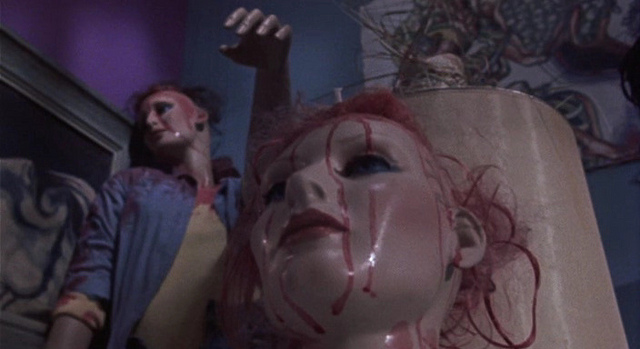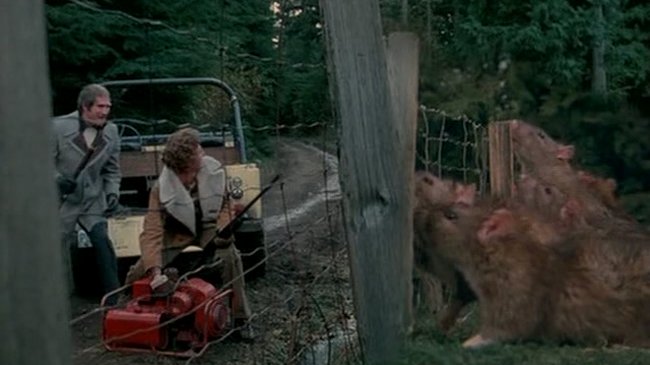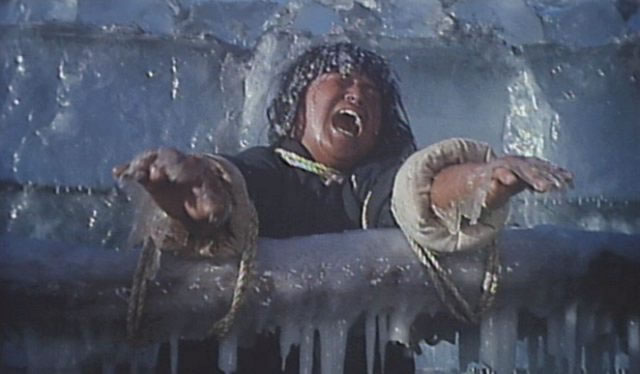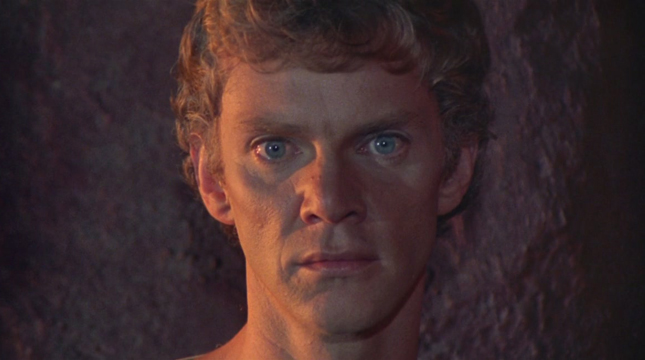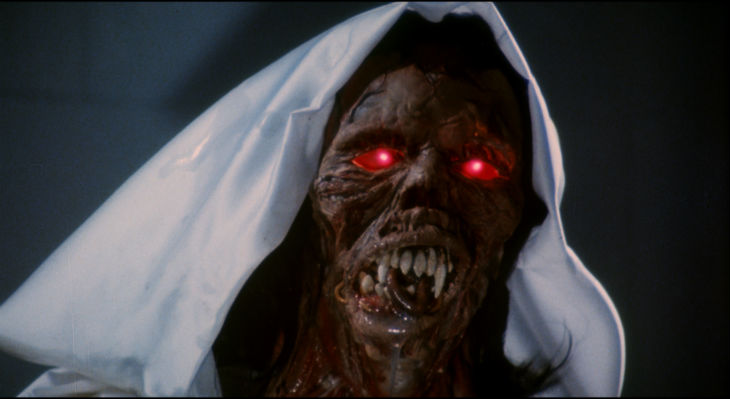9. Humanoids From the Deep aka Monster
Roger Corman sure loved him some rapey monsters back in the early ’80’s (just watch Galaxy of Terror if you have any doubts), and that’s what he sought to deliver in this tale of mutated humanoid salmon who prey on women along the shores of a tiny California fishing village.
The rape scenes are thankfully brief and not overly graphic, but director Barbara Peters wasn’t interested in having them at all: she claimed that Corman had the scenes shot and cut into the final film to up the exploitation factor. Even so, what you end up with is an interesting take on the classic ’50’s monster movie formula, chock full of gore, slimy fish-men, and Doug McClure.
10. Maniac (1934)
People unfamiliar with pre-Hayes Code films tend to think of movies from the first half of the Twentieth Century as being innocent and fairly coy in the way they presented controversial material. Maniac (also known as Sex Maniac) should dispel any such notions.
An actor in the employ of a mad scientist murders his boss and adopts his identity in order to avoid scrutiny. In the course of the story, much of which is lifted from Edgar Allen Poe’s The Black Cat, he accidentally injects a patient with amphetamines—causing him to turn into a bug-eyed, frothing sex fiend—and gouges out a cat’s eye.
The topless prostitutes and clothes-shredding girlfights come off pretty shocking considering the time the film was made, and some of the performances are so hilariously over-the-top they defy description. Short, strange, and truly one-of-a-kind.
11. Jive Turkey aka Baby Needs A New Pair Of Shoes
With a title like that, this could only be a movie from the mid-’70’s. Set (very unconvincingly) in 1956, the story concerns a kingpin of the Harlem numbers racket dealing with competition from the Mob and pressure from the Feds. Thematically similar to films such as Superfly and Black Caesar in its portrayal of African-American social climbing through the judicious pursuit of crime, Jive Turkey is an extremely low-budget, but interesting, addition to the blaxploitation genre.
While it struggles against production values that resemble those of Dolemite, it seems to be making an honest attempt to tell a period story about race and success in America, and adds a reasonable dose of ’70’s blood and a crazy killer transvestite to help spice things up.
12. Maniac (1980)
While it received some very negative critical responses during its initial run, Maniac is a fascinating, if grueling, attempt at a slasher film with much deeper character development for the villain (played by Joe Spinell, who also co-wrote the script). A lonely, demented loser in New York City murders women and scalps them, using his bloody trophies as decoration for the mannequins that keep him company in his apartment.
Infamous for three very violent scenes (the detailed scalping of one victim, special makeup effects legend Tom Savini having his head blown apart with a double-barreled shotgun, and star Spinell getting his head torn from his body during a nightmare/hallucination), Maniac is a milestone in gore cinema, every bit as disturbing and graphic as work being produced by George Romero or Lucio Fulci around the same time.
13. The Food of the Gods
Nature-gone-mad movies were kind of a thing back in the ’70’s (best exemplified by Jaws, most hilariously represented by Grizzly and this movie), and chronic giant-thing auteur Bert I. Gordon (The Amazing Colossal Man, Empire of the Ants) chose to very loosely adapt H.G. Wells’ novel into an epic of overgrown chickens, wasps, and rats launching an assault on a rural community.
Generally great for laughs (the rooster attack in a barn is unbelievable), the ending might draw the ire of any PETA members watching, as it appears the filmmakers felt it necessary to shoot and drown dozens of real rats in order to simulate a massive battle between the monster rodents and the movie’s human stars.
14. Men Behind The Sun
In a sense, this is the film Ilsa, She Wolf of the SS should have been. Maligned by many as nothing more than shock cinema, this dramatization of Japan’s notorious Unit 731, which conducted various inhuman experiments on Chinese and Russian prisoners during World War II, often feels like a sincere effort to make audiences aware of Japanese war atrocities.
But the film has a couple of problems—a somewhat cheap and rough-around-the-edges look that puts it several notches below Schindler’s List, and some seriously questionable decisions on the part of the director, in particular shooting the real autopsy of a newly-deceased boy and cutting the footage into the movie.
It’s should probably be mentioned that a cat is thrown into a room full of hungry rats that slowly (and allegedly, as sources don’t agree whether the cat lived or died) eat it alive (the same rats are, quite unallegedly, set on fire towards the end).
Naturally, this movie incited a lot of outrage. It’s also the first movie to earn the Hong Kong film rating of Category III (the equivalent to an X or NC-17 rating).
15. Caligula
Truly a rare animal in the exploitation menagerie: a big-budget historical porno/gross-out movie produced by Penthouse Magazine founder Bob Guccione, and starring Malcolm McDowell in the title role, with a supporting cast that includes Peter O’ Toole, John Geilgud, and a young Helen Mirren, and shot from a script by Gore Vidal.
Run times vary depending on which version of many you watch—the unrated cut, which clocks in at 156 minutes, has hardcore sex scenes shot by Guccione to make the film more marketable. Most agree that this is nowhere close to an accurate portrayal of the reign of the emperor Caligula, and while it tries to hold the viewer’s attention with nearly every kind of deviant and carnal act known to humankind, orgies, sodomy, disembowelment, rape, bestiality, incest, decapitation, you name it.
The film that came out of the end of a very troubled production is actually pretty dull, with one exception: an execution machine that is a moving wall with whirling blades at the base, made to behead victims that have been buried in the ground up to their necks. You don’t see that every day.
16. Q — The Winged Serpent
Giant monster movies aren’t typically known as an R-rated genre, but put the idea in the hands of a director like Larry Cohen (It’s Alive, Black Caesar, God Told Me To) and that’s precisely what you get.
While followers of an ancient Aztec cult skin their victims alive in New York City, a giant winged reptile builds its nest in the Chrysler Building, making occasional sojourns into town to rip peoples’ heads off.
A low-level hood (played by Michael Moriarty, giving a performance that drew a lot of critical praise at the time) discovers the creature’s lair and decides to use that knowledge to his advantage, killing off disagreeable business partners and trying to work a payday from a city desperate to find the location of the monster.
A quirky and unique approach to a monster movie, with a surprisingly human story and a cool stop-motion creature, and supporting performances from David Carradine and Richard Roundtree.
17. Night Train To Terror
In the ’70’s and ’80’s, anthology horror movies such as Tales From the Crypt and Creepshow were a steadily recurring sub-genre, and this gory, cheesy entry is a pretty amazing example.
The film presents three stories, all driven by a framing story concerning God and Satan riding a train with passengers bound for Heaven or Hell, and the two of them negotiate who in each of the tales should go where.
The first part centers on a lunatic asylum that murders women and harvests their body parts, the second a private club of thrill-seekers who dare each other to endure various deadly scenarios (including a giant super-poisonous hornet), and the third an old man seeking out an ageless Nazi war criminal who turns out to be a devil-worshipping sorcerer.
Cobbled together from three full-length features, Night Train To Terror is often unintentionally funny, full of low-budget ’80’s special effects, is never boring, and gives the viewer not one, but two performances from Richard Moll (Bull on the TV series Night Court).
